Small Eco Houses – Rosie Joe project
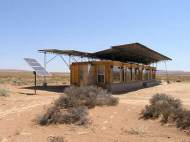 Rosie Joe house, a small project which dates back to 2004, was built in Navajo tribal reserve close to San Juan River, near the small town Bluff in south-eastern Utah. The project gave first and second year students at University of Utah College of Architecture + Planning an opportunity to build housing for poor families, while relying solely on donations budget of $30,000.
Rosie Joe house, a small project which dates back to 2004, was built in Navajo tribal reserve close to San Juan River, near the small town Bluff in south-eastern Utah. The project gave first and second year students at University of Utah College of Architecture + Planning an opportunity to build housing for poor families, while relying solely on donations budget of $30,000.
Led by Hank Louis, architect and philosopher who heads a nonprofit studio DesignBuildBLUFF, the students first built a 3D paper prototype of the house they were about to construct, a 111 square-meter (1,200 square-foot) rectangular structure with a double roof that could heat and cool itself naturally by a complex passive solar solutions. The project was chosen and designed for Rosie Joe, a single mother of two who worked three jobs and lived with her mother in 14 square meters (150 square feet). Family was involved from start to finish, thus ensuring the comfort, sustainability and success of the project.
Louis explained that the location was chosen to bring the students out of the classrooms to a remote location, where they had to stay on the field every day all-day-long, and live with locals to learn about their culture and land. Living at the location enabled them to turn their ideas into reality, experiment with sustainable designs and building processes. On the other hand, Bluff’s rural location brought challenges to students – extreme heat and cold, as well as no electrical power for tools. Luckily, it was a year-round building season at Bluff, and the land of half acre in the middle of a deserted Highway 191 was available.
Almost unreal, looking like some drive-through or a gas station, the house seems as it was cut-out from some fantasy film and put onto a dreamy dessert screensaver. Squared box, with interesting butterfly roof was built from various materials – collected, donated or bought on discounts from nearby mills, supermarkets and delivery depots.
After doing all the research and confirming the design they started with constructing a rammed earth wall at the site. It was chosen for its aesthetic, ready availability and thermal mass capacity. They gathered sand and clay from around the house, hand-packing it into a 23 meters by 45 centimeters (75 feet by 18 inch) mold. Made from the surrounding earth, the wall blends into the landscape. The concrete foundation came next.
The house was framed with exposed rough-sawn pine and mismatched wooden pallets were used to cover the ceiling. Students pieced together the odd-sized wooden pallets and lined them with canvas which was stuffed with insulation. This approach allows the air to circulate with easy, both indoors and outside the house. The south wall is comprised of windows of all sizes that the students found, collected and installed. Some interior walls are finished with clear acrylic, revealing packed, loose straw insulation. Interior dividing walls are faced with discarded road and highway signs, scavenged sheet metal and patina flashing metal.
The final and most challenging component was installing the semi-detached 232 square-meter (2,500 square-foot) butterfly roof. This open structure allows the winds to pass through the roof without lifting the panels. At the same time, the shape of the roof enables it to collect rainwater for the house uses. The wide panels send just couple inches of rainfall into a 5,678 liter (1,500 gallon) cistern above ground located on the east wall. Water from the traditional source collected by pickup and 55-gallon barrel can be pumped into the cistern as an alternative, and a hand-crank system fills interior reservoirs for the kitchen and bath.
A composting toilet was provided but declined in favor of the traditional outhouse, however a gray-water drainage system is provided to enable future attachment to a sewage system. Photovoltaic panels, inverter and batteries were provided for lighting and small electric appliances, while the energy for stove and refrigerator are supplied by propane.
The main DesignBuildBLUFF motto was: “The responsibility of an architect is to realize architecture that nurtures the spirit and improves the lives of all who experience it”. These young architects were driven by its true meaning during the whole Rosie Joe project. They proved that architecture can reflect and celebrate great cultures, and at the same time provide all the needed comfort.

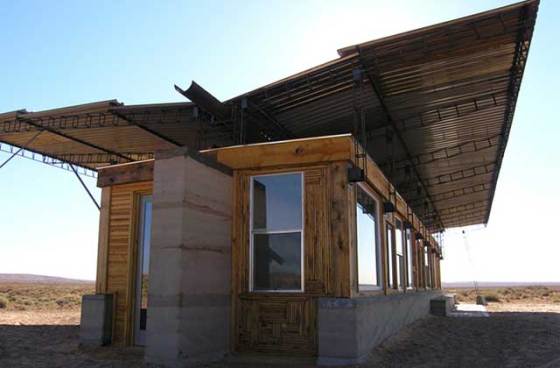
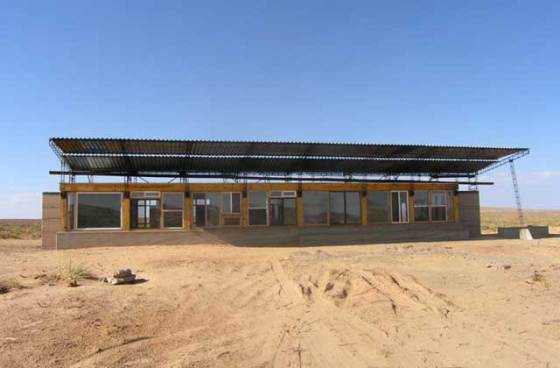
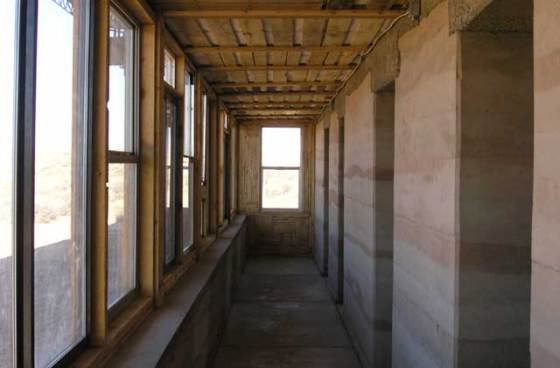
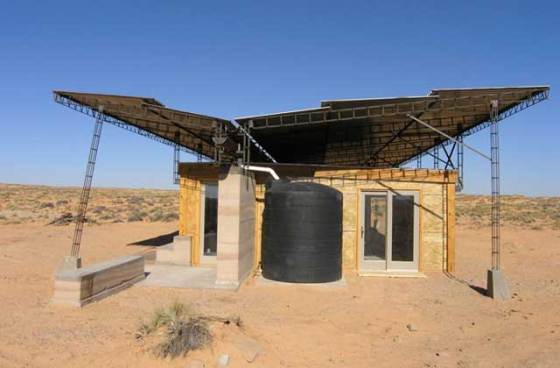








Leave your response!